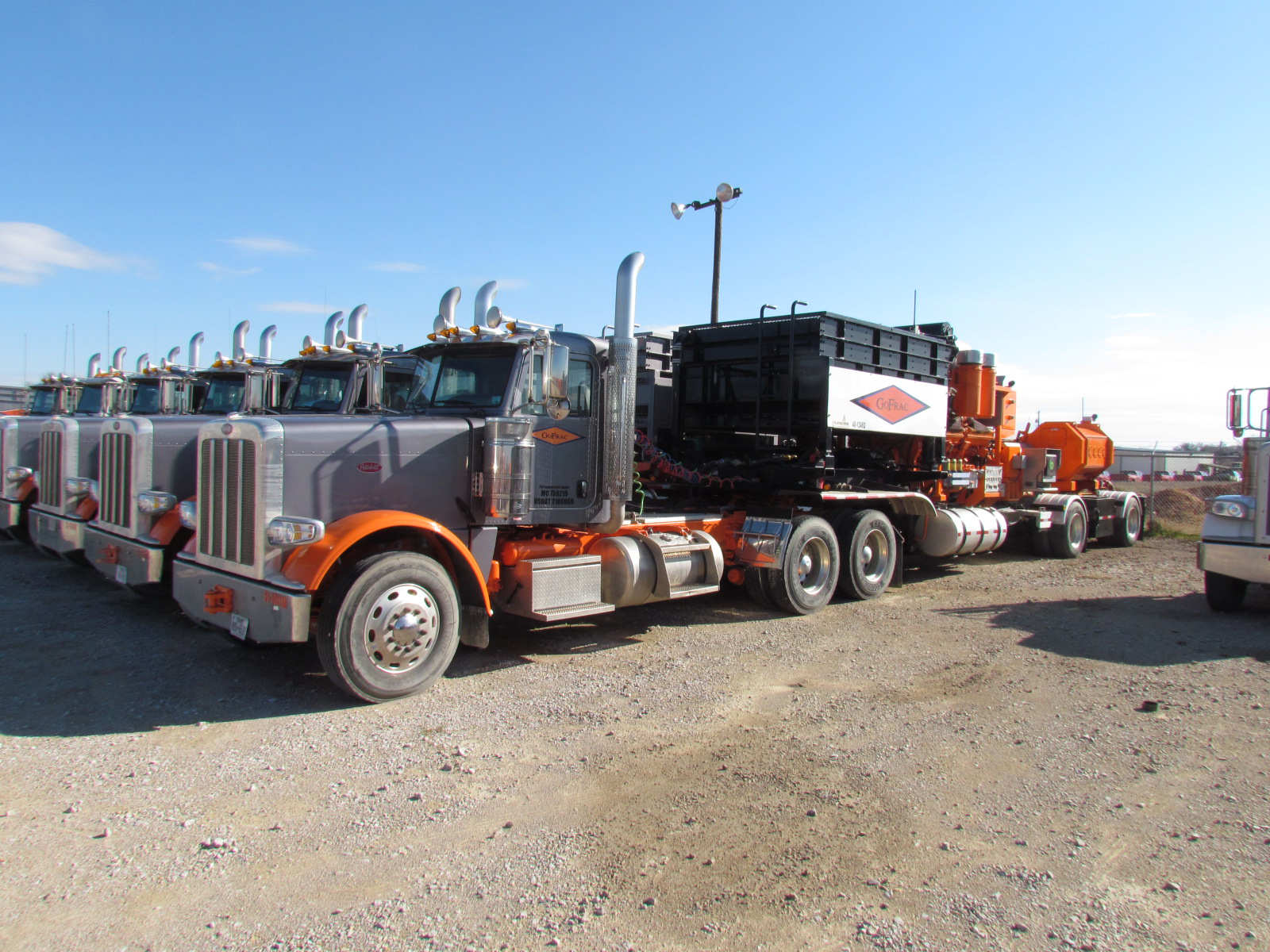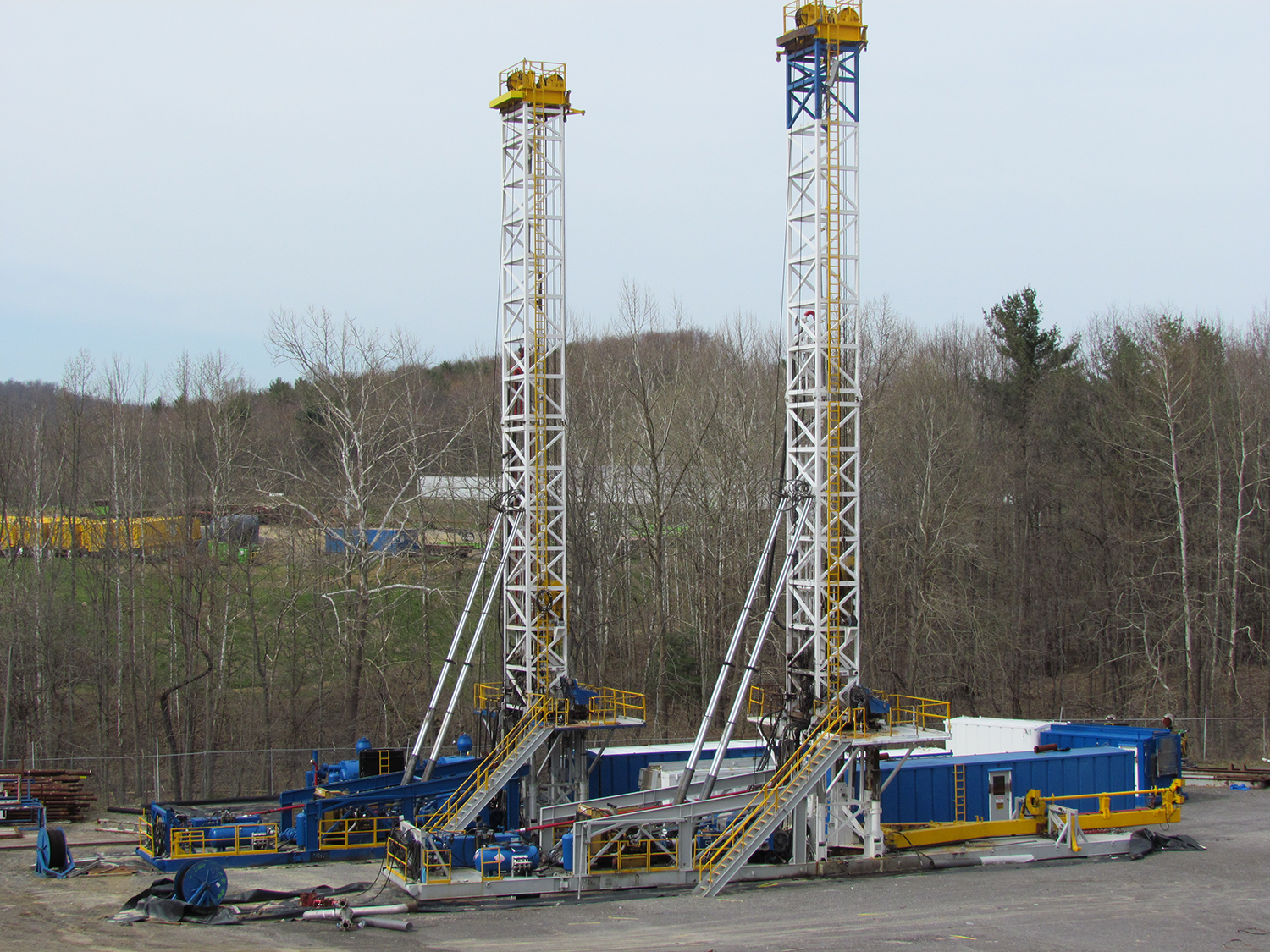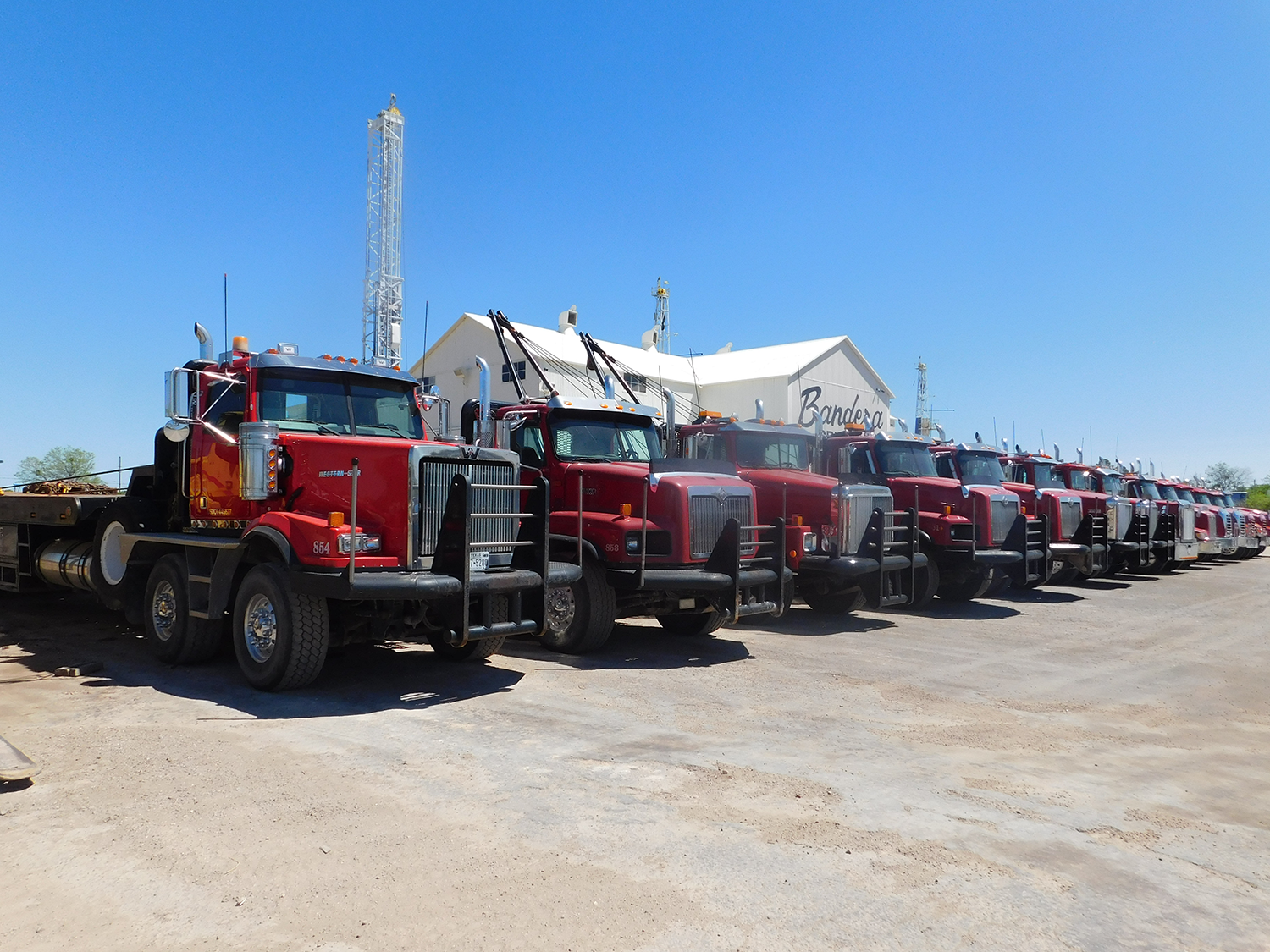Like a canary in a mine, an oilfield auction can be a bellwether of oil economy health. Frac equipment led auction sales for two years, as hardware that was being unloaded on the marketplace. And yet now it’s a hot buy.
By Paul Wiseman
When gauging the health of the oil field economy, there’s no question that price is the number one indicator. But the prices, quantity, and types of assets that pass under the auctioneer’s gavel give in-depth clues as to who is being affected and how.
Because fracturing is now synonymous with new well completions, the need for its associated equipment is at the forefront of those clues.

For the better part of two years these kinds of trucks and other frac machinery could hardly be given away. One sign of the uptick in the economy in recent months is the renewal of interest in this equipment.
“In the past year, our largest auctions have included frac’ing equipment, which brings out international as well as domestic buyers,” said Gary Bergman, general manager for Odessa-based Kruse Energy Auctioneers, in an email interview. Companies most active in selling have been those involved in frac’ing, well servicing, trucking, and fishing and rental tools. They also include “large publicly owned drilling companies selling drilling rigs they have de-commissioned, banks, private equity lenders, and smaller individual private corporations and individual proprietorships that are going out of business or changing the scope of their business.”
But with a new year, a new administration, and a new Middle East agreement, hope is in the air and frac equipment demand is on the rise, said Heath Bilby, Texas and Oklahoma auction specialist for Equify Auctions, which calls Ft. Worth home. He notes that the top purchase requests now are for “Frac tanks—specifically round-bottom frac tanks—trucks,” and other equipment. It will not be surprising to learn that there are plenty of frac tanks available now.
In fact, the first thing that happens in an upturn is that increased demand soaks up excess inventory for most equipment that had to be dumped on the market when times were bad.
Price and volume of sales also say a lot about the market. Bergman pithily boiled it down to this phrase: “In good times, we sell less equipment for more money and in bad times we sell more equipment for less money.”

Unlike graders and bulldozers, which can be sold into a variety of industries, drilling rigs only drill wells—which greatly lowers their value in a downturn. With Permian Basin drilling activity on the rise, however, these towering behemoths may soon be back to work.
Because Equify’s clientele transcends the oilfield, Bilby observed that their entire business follows this trend. Much of the machinery in their auctions, such as road graders and trenching equipment, can be also used for farm and ranch projects, road or pipeline construction, and other non-oilfield applications. Sellers of equipment with that kind of versatility fare better than those with oilfield-only items like drilling rigs, frac trucks, and cement pumps.
Bilby and Bergman have both seen the majority of sales coming from companies using the cash from auctions to stay afloat rather than those that were closing their doors. Auctions involving bankruptcy are challenging because they involve courts, lawyers, creditors, and piles of paperwork.
One Equify client used the auction process to change focus. “We’ve got a company that’s [auctioning] pipeline type equipment—trenching and underground technology—and they’re going into the utility business. Some machines carried over, that they were going to keep, and others they were getting rid of,” said Bilby.
Both auction houses see a significant amount of equipment being sold because it’s outdated, to make room for the newer and more efficient models—that happens no matter the state of the economy.
Kruse’s buyers over the last couple of years have been end users—domestic and international—dealers, speculators, and, in the worst case, salvage buyers. About 40 percent of Equify’s buyers are dealers.
Speculators often buy in a downturn hoping to hold onto the equipment until the turnaround and sell it at a profit, Bilby said. “A friend of mine’s in the cement pumping business,” he said, “and I asked him, six months into the downturn, what his price would be for a brand new pump” which would cost $1.3 million to manufacture. The friend said all it would bring in a downturn would be $125,000. When Bilby told his friend of the manufacturing cost, the friend replied, “That’s what it cost to make it, but I’ve got plenty—why do I need another one?”
Which is a reminder that it’s not just the service companies that hurt in a downturn—many manufacturers go under also.

Flatbed trucks like these can haul many kinds of equipment, which makes them easier to auction outside of the the oil industry when times are hard.
And while all oil basins were hurting, Bergman saw his best prices in the Permian. “Kruse auctions historically bring more money in the Permian Basin than in other areas of the United States and Canada.”
Equipment is not the only thing offered at auction in the oil patch. Property also changes hands this way, through companies like Amarillo’s EnergyNet. Chris Atherton is president of the firm, which engages in auctions, sealed bid transactions for the oil and gas industry. They also handle government lease sales for the State of New Mexico, the Texas General Land Office, University Lands, and the Bureau of Land Management. Property exchanges provide their own insight into the health of the oilfield.
It definitely shows where the hot basins are, and the Permian—particularly the Delaware Basin—are among the hottest in the nation right now.
In 2016 EnergyNet handled 1,150 transactions worth a total of $745 million nationwide. Around $14-15 million of those dollars were spent in the Delaware and Midland Basins over just the last six months of the year. “That bodes to the Basin itself and how the activity level is ramping back up,” he said.
The fact that one third of the dollar amount came from Permian deals but only a fourth of the deal count originated there indicates that Permian deals were larger than those occurring elsewhere. A $34 million deal for BHP in the Delaware and a $36 million Chevron transaction accounted for a large chunk of the Permian dollars.
A contributing factor to EnergyNet’s success and to the amount of Permian transactions is the fact that Chevron is a major client. Over the past 12 years the energy giant has sold “numerous packages in the Permian Basin that they deemed non-core assets—but,” he added, “what Chevron deems as non-core assets are company-makers for someone else.”
Other significant Permian sellers include Oxy, Parsley, and SM Energy, although he said there are lots of mom-and-pop sellers as well.
Most of the sellers, however, are larger companies like Chevron and Oxy, spinning off assets they own but do not have the budget to develop, or legacy assets that no longer produce at a level acceptable to a large company. Those levels, however, may be perfect for a mid-to-small level producer. Buyers typically are smaller E&P firms or private-equity-backed management teams.
One thing that buyers and sellers large and small always hope for is oil price stability—even if it’s at a lower price. Because a typical transaction is about a 35-day process, price volatility could radically change who makes and loses money in that amount of time. Volatility, therefore, effectively plugs the flow of deals until prices stabilize at some level. “Even if prices stabilized at $50 a barrel we’d probably have a very robust 2017,” Atherton said.
And while an increase in price would be nice, he noted that much of the current production increase has been carried on the backs of service companies who have drastically lowered their prices in order to maintain cash flow. Because of that, he mused that the first upticks in oil prices might be absorbed by service companies who need to boost their own prices in order to stay alive. So oil prices might have to rise significantly more before areas outside the Permian begin to pick up.
“It may be more gradual—other basins won’t be as lucrative as service costs inch back up along with the price [of oil]. But I do think that, back in the Midland Basin and even the Eagle Ford, Bakken Shale, Niobrara will become more attractive as the oil price increases,” said Atherton.
Paul Wiseman is a freelance writer in Midland, Texas. His email address is paul@paulmwiseman.com.









